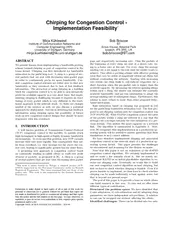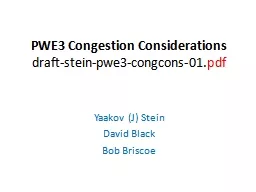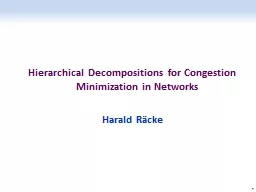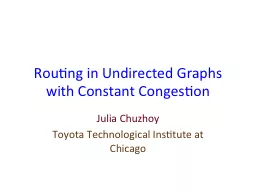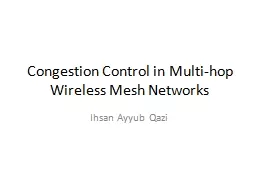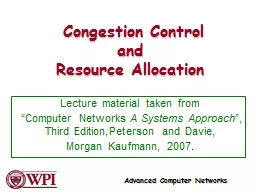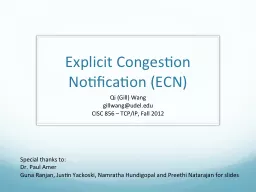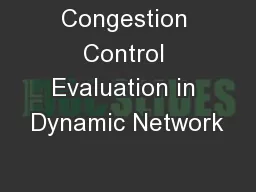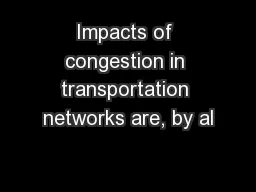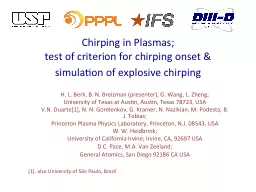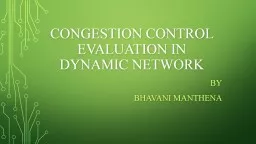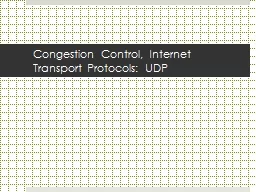PDF-Chirping for Congestion Control Implementation Feasib
Author : briana-ranney | Published Date : 2015-05-15
kuehlewindikrunistuttgartde Bob Briscoe BT Sirius House Adastral Park Ipswich IP5 3RE UK bobbriscoeBTcom ABSTRACT We present lessons from implementing a bandwidth
Presentation Embed Code
Download Presentation
Download Presentation The PPT/PDF document "Chirping for Congestion Control Impleme..." is the property of its rightful owner. Permission is granted to download and print the materials on this website for personal, non-commercial use only, and to display it on your personal computer provided you do not modify the materials and that you retain all copyright notices contained in the materials. By downloading content from our website, you accept the terms of this agreement.
Chirping for Congestion Control Implementation Feasib: Transcript
Download Rules Of Document
"Chirping for Congestion Control Implementation Feasib"The content belongs to its owner. You may download and print it for personal use, without modification, and keep all copyright notices. By downloading, you agree to these terms.
Related Documents

